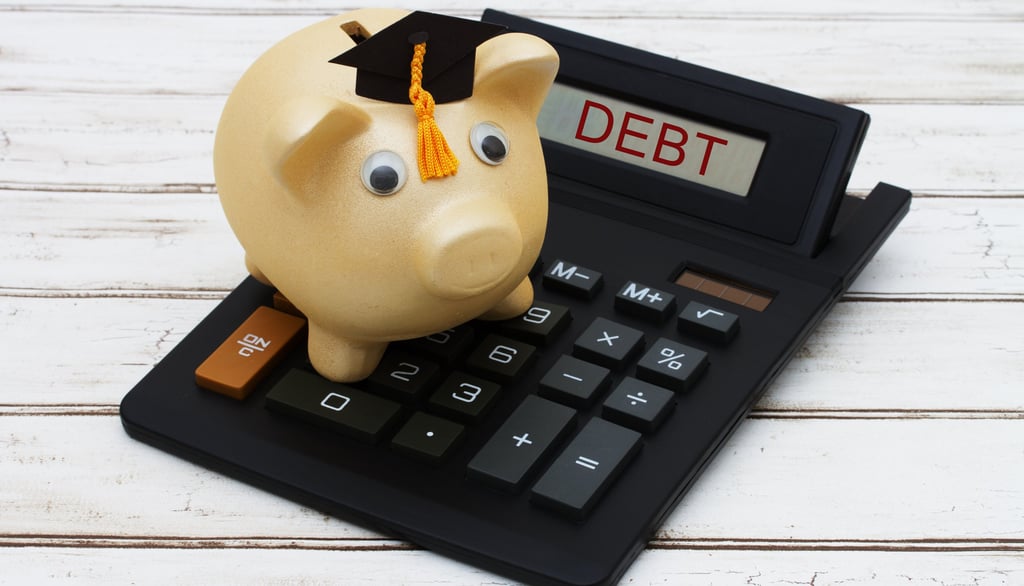Student Loans: How to Manage and Pay Off Your Debt Efficiently
Here's a guide to help you pay it off efficiently and regain your financial freedom.
Finistack
2/19/20252 min read


For millions of Americans, student loan debt is a reality that follows them long after graduation. As of January 2025, total U.S. student loan debt has climbed to $1.773 trillion, with an average borrower owing $35,207. While this number may seem overwhelming, there are strategic ways to manage and pay off student loans efficiently without sacrificing your financial future.
Understanding Your Loans
The first step to tackling student debt is understanding what you owe. Review your loan balances, interest rates, and repayment terms. Federal loans offer flexible repayment plans, while private loans may have higher interest rates but different refinancing options. Use resources like the Federal Student Aid website to track your loans and explore repayment plans that fit your budget.
Choosing the Right Repayment Plan
If you have federal student loans, consider an income-driven repayment (IDR) plan, which adjusts monthly payments based on your income. For those who can afford higher monthly payments, the standard repayment plan (typically 10 years) minimizes total interest paid. Tools like the Loan Simulator can help compare different plans.
Making Extra Payments
A simple but powerful strategy is paying more than the minimum amount. Even an extra $50 per month can shave years off your loan term and save thousands in interest. Be sure to specify that extra payments go toward the principal balance, not future interest.
Setting Up Autopay
Enrolling in automatic payments can prevent late fees and, in some cases, qualify you for a 0.25% interest rate reduction on federal loans. This small reduction adds up over time and helps you stay consistent with payments.
Refinancing for a Lower Interest Rate
For private loan borrowers, refinancing can be a game-changer. If you have a strong credit score and stable income, refinancing your student loans can secure a lower interest rate, reducing both your monthly payment and total repayment cost. However, refinancing federal loans into private loans removes options for income-driven repayment and loan forgiveness, so weigh the pros and cons carefully.
Exploring Loan Forgiveness Programs
If you work in public service, education, or non-profit sectors, you may qualify for Public Service Loan Forgiveness (PSLF) or Teacher Loan Forgiveness. These programs forgive remaining loan balances after a certain number of qualifying payments. Check the Federal Student Aid website to see if you’re eligible.
Using Windfalls Wisely
Instead of splurging on a luxury purchase, apply unexpected funds—such as tax refunds, bonuses, or gift money—toward your student loan balance. This strategy can significantly shorten your repayment period and reduce overall interest costs.
Avoid Extending Repayment Terms Unnecessarily
While extending your loan term can lower monthly payments, it increases the amount of interest paid over time. If your budget allows, opt for the shortest repayment term possible to reduce long-term costs.
Final Thoughts
Paying off student loan debt requires strategy, discipline, and smart financial decisions. Whether you opt for extra payments, refinancing, or loan forgiveness, taking proactive steps will help you regain financial freedom faster. Want to dive deeper into student loan strategies? Check out Consumer Financial Protection Bureau’s guide for expert insights.
**Disclaimer: This blog may include AI-generated content derived from web crawling, and it features quotes from original cited inline or public sources. The information presented is for general informational purposes only and may not reflect the most current data or information available. While we strive for accuracy, we encourage readers to verify the information from original sources or reach out to a certified financial adviser for important financial decisions.
